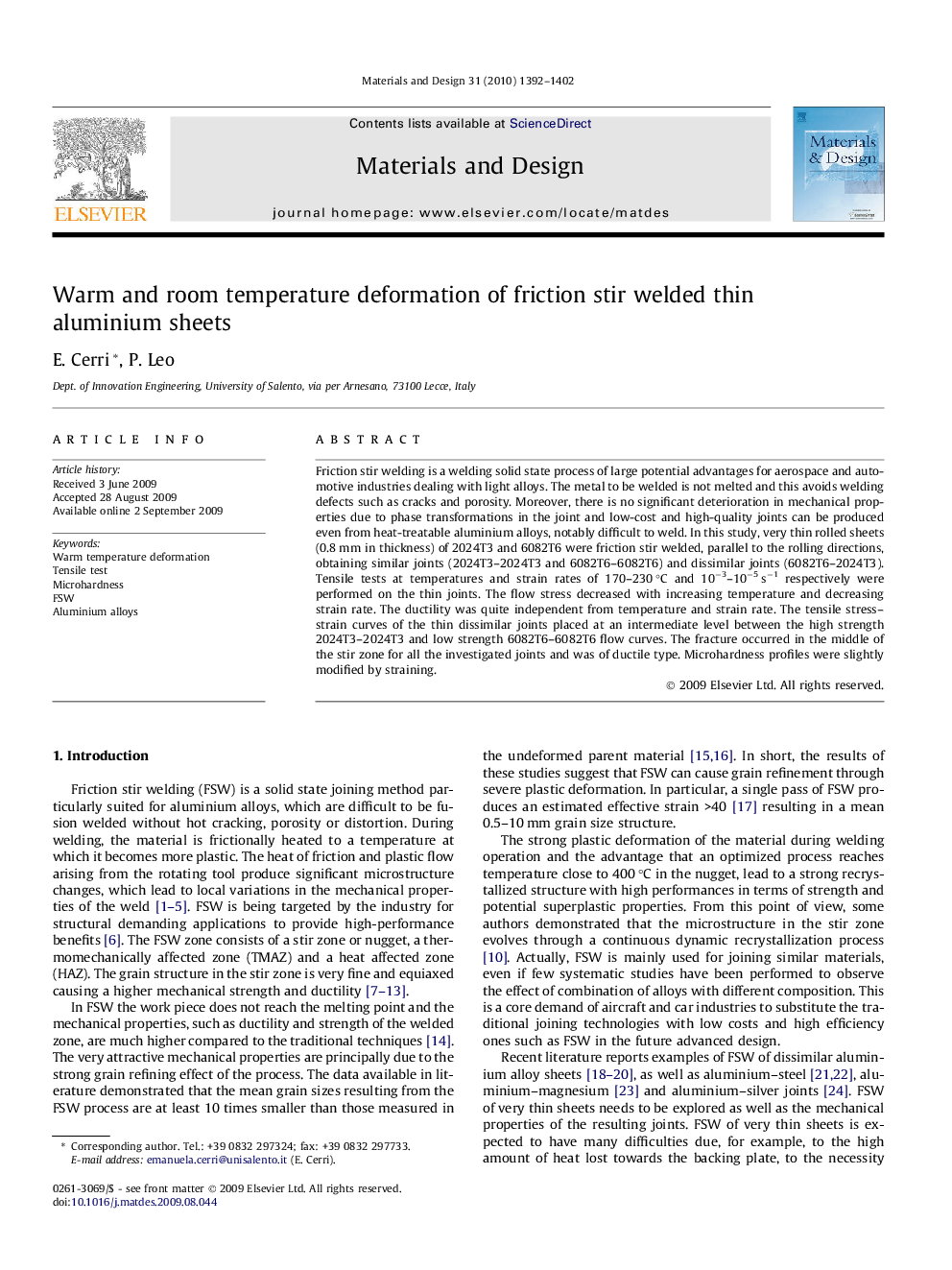| Article ID | Journal | Published Year | Pages | File Type |
|---|---|---|---|---|
| 832507 | Materials & Design (1980-2015) | 2010 | 11 Pages |
Friction stir welding is a welding solid state process of large potential advantages for aerospace and automotive industries dealing with light alloys. The metal to be welded is not melted and this avoids welding defects such as cracks and porosity. Moreover, there is no significant deterioration in mechanical properties due to phase transformations in the joint and low-cost and high-quality joints can be produced even from heat-treatable aluminium alloys, notably difficult to weld. In this study, very thin rolled sheets (0.8 mm in thickness) of 2024T3 and 6082T6 were friction stir welded, parallel to the rolling directions, obtaining similar joints (2024T3–2024T3 and 6082T6–6082T6) and dissimilar joints (6082T6–2024T3). Tensile tests at temperatures and strain rates of 170–230 °C and 10−3–10−5 s−1 respectively were performed on the thin joints. The flow stress decreased with increasing temperature and decreasing strain rate. The ductility was quite independent from temperature and strain rate. The tensile stress–strain curves of the thin dissimilar joints placed at an intermediate level between the high strength 2024T3–2024T3 and low strength 6082T6–6082T6 flow curves. The fracture occurred in the middle of the stir zone for all the investigated joints and was of ductile type. Microhardness profiles were slightly modified by straining.
